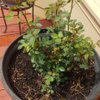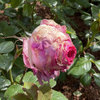New University of Georgia Rose Rosette Virus article
henry_kuska
11 years ago
Related Stories

GARDENING GUIDESWhat Kind of Roses Should You Grow?
Want to add the beauty of roses to your garden? Find out which ones, from old-fashioned to modern, are right for you
Full Story
GARDENING GUIDES5 Sweet to Spirited Pink Roses for an Enchanting Garden
Whether you go demure or daring, there's a pink rose here to make you flush with garden pride
Full Story
GARDENING GUIDESNew Ways to Think About All That Mulch in the Garden
Before you go making a mountain out of a mulch hill, learn the facts about what your plants and soil really want
Full Story
GARDENING GUIDESOh, Deer! 10 Native Flowers That Stand Up to the Herds
Keeping a garden amid hungry deer can be hard, but these plants should fare well
Full Story
STUDIOS AND WORKSHOPSCreative Houzz Users Share Their ‘She Sheds’
Much thought, creativity and love goes into creating small places of your own
Full Story
GREEN BUILDINGWhat's LEED All About, Anyway?
If you're looking for a sustainable, energy-efficient home, look into LEED certification. Learn about the program and its rating system here
Full Story
GARDENING GUIDES8 Plants for a Deliciously Fragrant Fall Garden
Scent the autumn air with the perfume of caramel corn, honey and spices by adding these intoxicating plants to your landscape
Full Story
FARM YOUR YARDHello, Honey: Beekeeping Anywhere for Fun, Food and Good Deeds
We need pollinators, and they increasingly need us too. Here, why and how to be a bee friend
Full Story
TRIMShutter Cutouts: A Window to One's Soul?
To settle on the perfect shape for this simple detail, follow your heart — or diamond, or maple leaf
Full Story
GARDENING FOR BUTTERFLIES3 Ways Native Plants Make Gardening So Much Better
You probably know about the lower maintenance. But native plants' other benefits go far beyond a little less watering and weeding
Full Story








catsrose
michaelg
Related Professionals
Wrentham Landscape Architects & Landscape Designers · Port Royal Landscape Architects & Landscape Designers · Avocado Heights Landscape Contractors · Americus Landscape Contractors · Clearlake Landscape Contractors · Columbine Landscape Contractors · Davidson Landscape Contractors · Dudley Landscape Contractors · Essex Landscape Contractors · Framingham Landscape Contractors · Lorain Landscape Contractors · Pleasant Hill Landscape Contractors · Salem Landscape Contractors · Whittier Landscape Contractors · Baileys Crossroads Landscape Contractorsbuford
henry_kuskaOriginal Author
anntn6b
henry_kuskaOriginal Author
buford
henry_kuskaOriginal Author
anntn6b
henry_kuskaOriginal Author
Kippy
henry_kuskaOriginal Author
Kippy
henry_kuskaOriginal Author
anntn6b
henry_kuskaOriginal Author
anntn6b
henry_kuskaOriginal Author
Kippy